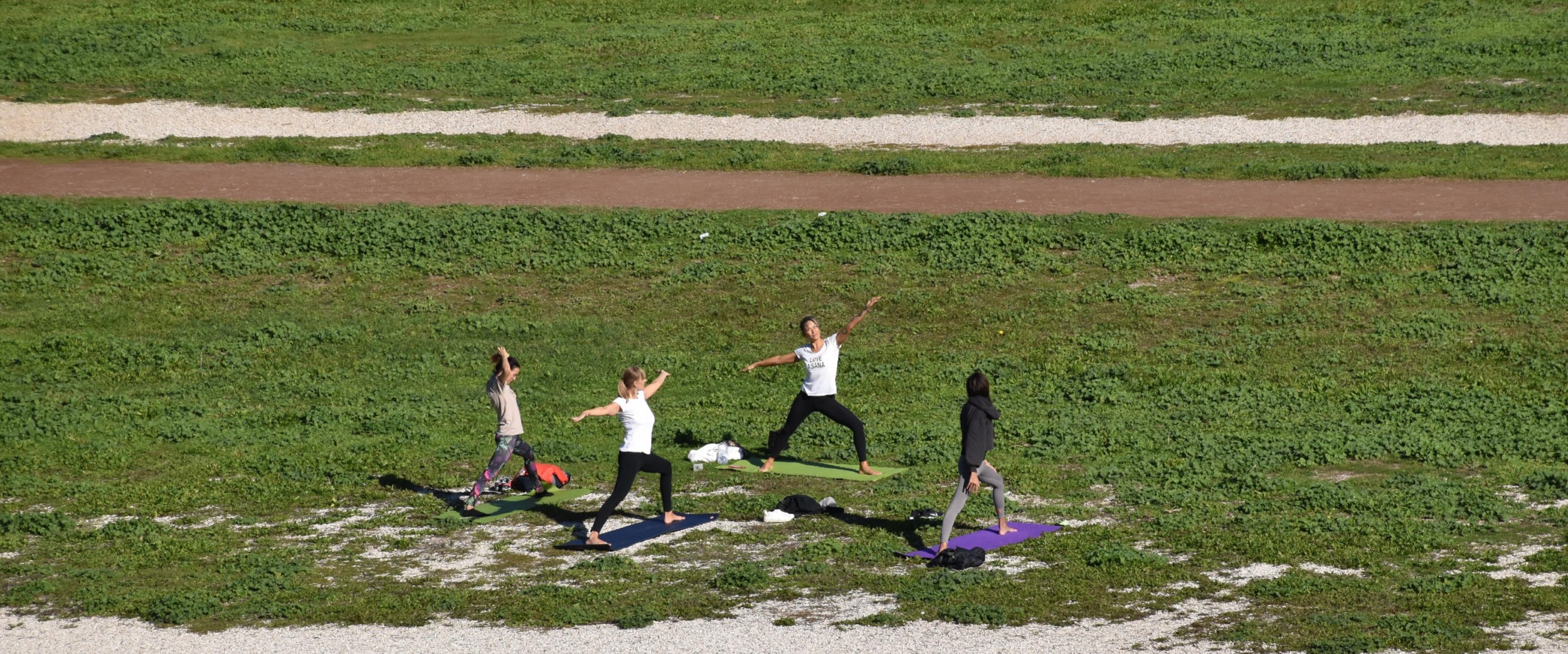by Jaime Glassman, R.Kin from Willkin
It is a well-known fact that exercise has been proven to help with cancer-related fatigue, helping to manage the weakness and pain experienced due to treatment and its side effects, as well as de-conditioning. When you’re in pain, tired and feeling ill, it can be challenging to find the motivation to prioritize activity, but several studies show that performing a combination of strength, aerobic and flexibility exercise can help curb the symptoms that hold back our quality of life.
Previously, we wrote about how to start getting active, but there are additional ways to maintain discipline and to continue on that active path whilst managing your condition. You can choose to exercise on your own, within a group setting or work one-on-one with a supervised exercise program.
Self-Directed Activity
When it comes to engaging in or restarting an exercise routine, the key is consistency and progression. The World Health Organization recommends 150 minutes of moderate exercise or 75 minutes of vigorous exercise per week, but you can start with anything and slowly progress.
When thinking about exercise choice, be conscious about your symptoms, how you feel and your level of fatigue. When starting, be conscious that you may get tired faster and that’s okay. Listening to your body, getting adequate rest and recovery and proper hydration can help progress exercise safely.
Pick an activity or sport you love or simply do something social and active with friends. Perhaps build a new skill, set a goal to get outside or incorporate some stretches into your life every evening. These are all great ways to get started at integrating a more active lifestyle.
For example, if you can walk 10 minutes a day before you feel tired, a goal could be to consistently walk 10 minutes a day for 5 days, over a few weeks until that volume starts to feel easier and you feel you have more energy to give. Then, you can add a couple more minutes to your walk. Another example could be, if your maximum capacity for standing up from a chair is 10 repetitions, increase from 5-8 reps twice a week until you can get up to 10 with ease. From there you can progress to a higher volume. This principle can be followed with a variety of exercises to increase your capacity and stamina. Either way, start small and be kind to yourself. Some days will be harder than others and it’s okay to take a day or two off to focus on managing your symptoms. Rest is a good thing. If you find that a long time has passed after taking a rest, it’s okay to restart more gently. If you’d like to learn more about ways you can incorporate exercise on your own, check out our last blog post.
Participate in a Group Exercise Class
There are several organizations that provide group exercise classes for individuals living with cancer. It can be a great way to grow, have fun and get moving with a community of individuals that understand what you’re going through and are committed to their own health and wellness. Studies have shown that adherence to exercise is increased when individuals participate in a group setting. It can be a safe environment for women to feel strong, empowered and at their most comfortable, with others having a similar experience. This is also an option that can accommodate the unexpected effects of your condition whether a bout of fatigue, pain or illness strikes, you can always take a day off and come back to a consistent group that supports you and your success. There are paid and free options depending on what suits your particular needs. In the current climate, in person group classes may not be an option but virtual group classes are currently available. Virtual group classes are a great way to get exposure to activity in your own home and connect with a group of peers with similar goals and experiences.
Supervised Exercise Programs
If you’re looking for an option that is more personalized to you and your needs, a supervised exercise program with a qualified and experienced professional who understands your condition and needs can be a great option for you. Supervised exercise has continually been proven to help with adherence and success in building strength and endurance, reducing fatigue and illness related symptoms as well as improving overall quality of life for breast cancer patients. With a one-on-one approach, individuals can get coached through safe and effective exercise. Specialist programming also helps to ensure that you’re moving correctly and applying the things you learn safely at home on your own. Individualized, supervised exercise can also address a host of concerns if you have severe symptoms, contraindications to traditional exercise options or if you just want to feel heard and supported by someone that cares.
At WillKin Health, we are sensitive to your individual needs and priorities whilst providing a service that helps you exercise safely, manage your symptoms better and feel more informed and motivated to self-manage your lifestyle in the long-term
References
Blaney J., Lowe-Strong A., Rankin J., Campbell A., Allen J., Gracey J. (2010). The cancer rehabilitation journey: Barriers to and facilitators of exercise among patients with cancer-related fatigue. Physical Therapy. 90(8): 1135–1147. https://doi.org/10.2522/ptj.20090278
Courneya K.S., McKenzie D.C., Reid R.D., et al. (2008). Barriers to supervised exercise training in a randomized controlled trial of breast cancer patients receiving chemotherapy. Annals Behavioral Medicine. 35(1): 116-122. https://doi.org/10.1007/s12160-007-9009-4
Emslie C., Whyte F., Campbell A., Mutrie N., Lee L., Ritchie D., Kearney N. (2007). I wouldn't have been interested in just sitting round a table talking about cancer’; Exploring the experiences of women with breast cancer in a group exercise trial. Health Education Research. 22(6): 827–838. https://doi.org/10.1093/her/cyl159
Hwang J.H., Chang H.J., Shim Y.H., et al. (2008). Effects of supervised exercise therapy in patients receiving radiotherapy for breast cancer. Yonsei Medical Journal. 49(3): 443-450. https://doi.org/10.3349/ymj.2008.49.3.443
Meneses-Echávez J.F., González-Jiménez E., Ramírez-Vélez R. (2021). Effects of supervised exercise on cancer-related fatigue in breast cancer survivors: A systematic review and meta-analysis. BMC Cancer. 15(77). https://doi.org/10.1186/s12885-015-1069-4
Meneses-Echávez J.F., González-Jiménez E., Ramírez-Vélez R. (2015). Effects of supervised multimodal exercise interventions on cancer-related fatigue: Systematic review and meta-analysis of randomized controlled trials. Biomed Research International. 2015(328636). https://doi.org/10.1155/2015/328636
Sweegers M.G., Altenburg T.M., Chinapaw M.J., et al. (2018). Which exercise prescriptions improve quality of life and physical function in patients with cancer during and following treatment? A systematic review and meta-analysis of randomised controlled trials. British Journal of Sports Medicine. 52(8): 505-513. https://doi:10.1136/bjsports-2017-097891
Witlox, L., Hiensch, A.E., Velthuis, M.J. et al. (2018). Four-year effects of exercise on fatigue and physical activity in patients with cancer. BMC Med. 16: 86. https://doi.org/10.1186/s12916-018-1075-x
Photo by nicola papaleo on Unsplash







